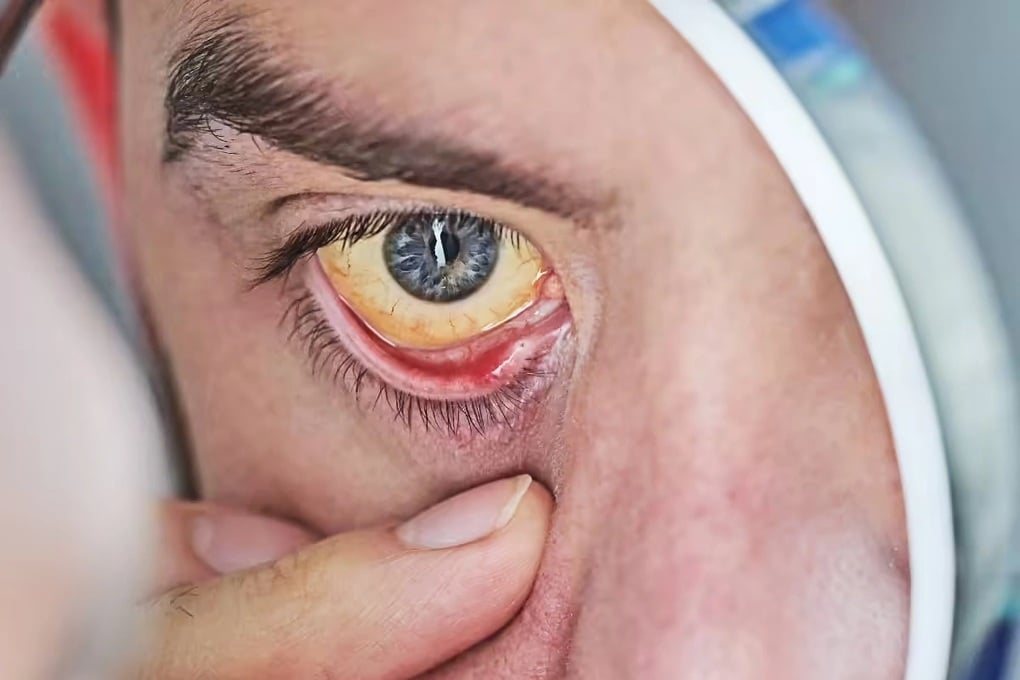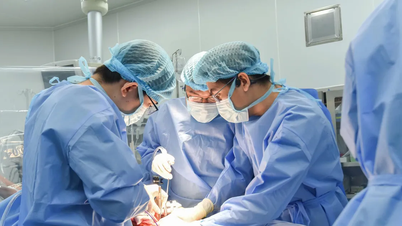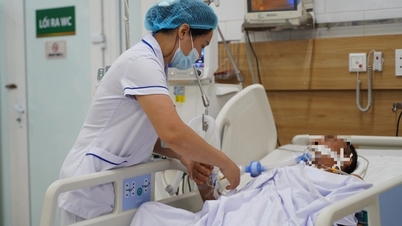Viral hepatitis is inflammation and damage to the liver caused by viruses, most commonly hepatitis A, B, C, D, and E viruses.
Hepatitis B and C viruses are transmitted through blood, unsafe sex and from mother to child. Hepatitis B virus (HBV) and hepatitis C virus (HCV) often cause chronic diseases and have complications such as cirrhosis and liver cancer, which are highly fatal.
Jaundice is a very recognizable warning sign of hepatitis (Photo: Shutterstock).
Alarming numbers
Chronic viral hepatitis causes 1.3 million deaths each year with 8,000 new infections each day. Hepatitis B and C are two silent diseases that are also the main causes of liver cancer and cirrhosis.
According to statistics from the World Health Organization (WHO), there are about 254 million people living with hepatitis B in the world. The number of people with hepatitis C is 50 million. Every day, about 6,000 people in the world are diagnosed with viral hepatitis and 3,500 people die. The alarming thing is that this alarming number continues to increase.
Vietnam is identified as one of the 10 countries with the highest number of people infected with hepatitis B and C in the world , with about 6.5 million people infected with hepatitis B and 900,000 people infected with hepatitis C.
In Vietnam, liver cancer is the leading cause of cancer death, of which 90% of cases are related to hepatitis B and C. However, many people only discover they have the disease when it is in the late stages, significantly reducing the effectiveness of treatment and increasing the risk of serious complications such as cirrhosis and liver cancer.
The danger is that the hepatitis virus can live in the body for years without causing symptoms or easily confused symptoms such as fatigue, decreased energy or general weakness; muscle and joint aches; abdominal pain; nausea, vomiting; decreased appetite; dark urine and pale stools; jaundice...
Signs of liver disease through the skin
Dr. Saurabh Sethi, a leading gastroenterologist in California (USA), has pointed out four signs on the skin that can warn of liver dysfunction that can be easily recognized at home.
Yellow skin and eyes
Jaundice is the most common and easily recognizable sign of liver disease. This condition occurs when the skin and whites of the eyes turn yellow due to the accumulation of bilirubin, a yellow pigment produced during the breakdown of red blood cells.
Normally, the liver is responsible for processing and removing bilirubin through stool and urine. However, when the liver fails to function, bilirubin builds up in the blood, leading to yellowing of the skin and eyes.
This is a serious sign, requiring immediate medical examination to determine the cause and timely treatment to avoid dangerous complications.
Spider webs
Another sign of liver dysfunction is the appearance of spider veins. These are small, dilated blood vessels that resemble a spider web with a central point and radiating branches, often appearing on the face, neck, or chest.
According to Dr. Sethi, this phenomenon occurs due to increased estrogen levels in the body. This is a result of the liver not being able to metabolize the hormone effectively.
If you notice these unusual red spots, especially if they appear with other symptoms, have your liver checked to determine the cause.
Palmar erythema
This sign is often easily overlooked because it is confused with skin diseases or physical activity.
This condition is caused by increased blood flow and estrogen levels, both of which are associated with liver dysfunction. This symptom may not be obvious, but if it persists or is accompanied by other symptoms, you should consult a doctor to evaluate your liver condition.
Itchy skin
Itching, especially severe itching at night, is another important sign of liver disease. Unlike itching caused by dry skin or allergies, itching caused by liver disease is often persistent and can seriously affect quality of life.
This condition occurs due to the accumulation of bile salts under the skin when the liver cannot excrete them effectively. If the itching persists or is accompanied by signs such as jaundice, spider veins or red palms, it is a warning that requires immediate medical attention, says Dr. Sethi.
Source: https://dantri.com.vn/suc-khoe/nhung-dau-hieu-tu-lan-da-bao-dong-gan-co-van-de-20250728132457147.htm




![[Photo] Comrade Nguyen Duy Ngoc holds the position of Secretary of the Hanoi Party Committee](https://vphoto.vietnam.vn/thumb/1200x675/vietnam/resource/IMAGE/2025/11/04/1762234472658_a1-bnd-5518-8538-jpg.webp)
![[Photo] The road connecting Dong Nai with Ho Chi Minh City is still unfinished after 5 years of construction.](https://vphoto.vietnam.vn/thumb/1200x675/vietnam/resource/IMAGE/2025/11/04/1762241675985_ndo_br_dji-20251104104418-0635-d-resize-1295-jpg.webp)
![[Photo] Ho Chi Minh City Youth Take Action for a Cleaner Environment](https://vphoto.vietnam.vn/thumb/1200x675/vietnam/resource/IMAGE/2025/11/04/1762233574890_550816358-1108586934787014-6430522970717297480-n-1-jpg.webp)
![[Photo] Ca Mau "struggling" to cope with the highest tide of the year, forecast to exceed alert level 3](https://vphoto.vietnam.vn/thumb/1200x675/vietnam/resource/IMAGE/2025/11/04/1762235371445_ndo_br_trieu-cuong-2-6486-jpg.webp)





































































































Comment (0)